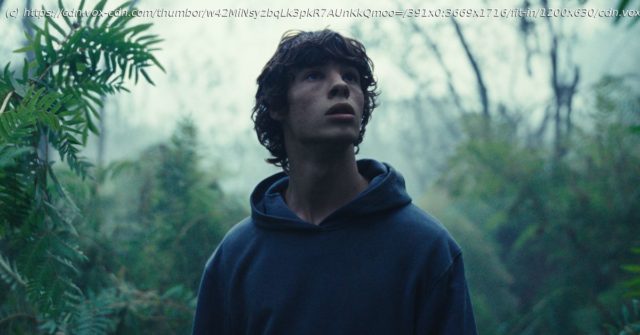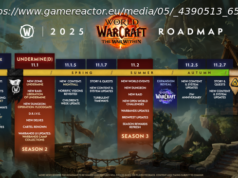Now on Hulu, the French sci-fi movie The Animal Kingdom has incredible creature designs. We talked to director Thomas Cailley about how he made it happen.
This interview with Animal Kingdom director Thomas Cailley was originally published in conjunction with the movie’s U.S. theatrical release. It has been updated and republished for the movie’s Hulu debut.
In the French sci-fi film The Animal Kingdom, the world is changing and humans are changing with it. A mutation begins transforming humans into animal hybrids, creating a variety of bird-humans, insect-humans, mammal-humans, and many other new types of beings. Caught in the middle of this upheaval are a divided family — the mother, in the middle of mutation, has gone missing from a medical transport, which leaves the father and son desperately searching for her. The fantastic movie is now available for digital rental, and streaming on Hulu, after originally screening at Cannes and other film festivals in 2023.
The creature design in The Animal Kingdom is a perfect example of how practical and digital effects can work in harmony to augment each other, building an effect unachievable by either alone. Director Thomas Cailley and his team used a blend of various practical effects (suits, makeup, animatronics) and digital effects to create some of the most evocative and original designs in years, like a scaly pangolin-human or a chameleon-human who can blend in with the environment.
But at the heart of the movie is the moving relationship between father and son. Romain Duris (Aramis in France’s latest blockbuster adaptation of The Three Musketeers) is incredibly moving in his portrayal of the father, François, bringing out his fear about losing his beloved family, and the deep care he has for them no matter the circumstances. Paul Kircher’s performance as his son, Émile, is transcendent, especially as the teenager starts to go through some unexpected changes, evolving every element of his physical performance while still retaining the moody soul of a troubled teen. Together, they bring a complex relationship to life in a hectic world.
Fascinating and endlessly discussable, especially in the questions it poses about humanity and how we treat those different from us, The Animal Kingdom depicts its changing world with great care. The presence of these hybrid people causes disparate reactions from the humans in the film — compassion, fear, anger, disgust. Some people are deeply concerned with how the hybrid people are treated and advocate for coexisting, while others form militias and advocate for violence. It all results in a very grounded depiction of how our society reacts to people that are otherized, in all of its shades.
The movie’s central premise is one that invites many different allegorical readings: Is it about race? Is it about disability? Is it about gender? Is it about xenophobia? The vast span of interpretations is something Cailley told Polygon he appreciates about audience reactions so far, but the director insists there’s no right answer. It all combines for one of the most intriguing movies of the year, and one of the best original works of science fiction in recent memory. Ahead of the release, Polygon spoke to Cailley about the movie’s complicated morality, gorgeous effects, and his favorite creature designs with the help of a translator, Nicholas Elliot.
Polygon: What was the genesis for the idea of the project, and how did you first get involved?
Thomas Cailley: Originally, I wanted to tell a father-son story, and I wanted there to be a fantasy element, something that would shift the narrative, take it elsewhere. And by chance, I met a young woman [Pauline Munier] who was a screenwriter who was still in school, actually for screenwriting at the time.
Домой
United States
USA — software The Animal Kingdom director unpacks the year’s most fascinating sci-fi movie






